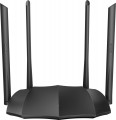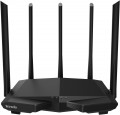WAN
The WAN port characterizes the ability of the device to receive a wired signal. There may be models with both one port and
two WAN ports, and in rare cases, more connected providers. Such an expanded number of WAN connectors affects the cost and, accordingly, is found in more part among professional-level routers.
In terms of speed, when choosing a device, the priority is the speed of the output LAN port or Wi-Fi. However, faster WAN ports (
1 Gbps,
2.5 Gbps,
5 Gbps,
10 Gbps) allow you to divide the load on several outputs at once without reducing speed performance, as may be the case with
WAN port 100 Mbps.
LAN
In this case, LAN means standard network connectors (known as RJ-45) designed for wired connection of LAN devices — PCs, servers, additional access points, etc. The number of ports corresponds to the number of devices that can be directly connected to wired equipment. way.
In terms of speed,
100 Mbps (Fast Ethernet) and
1 Gbps (Gigabit Ethernet) are the most popular options today. At the same time, thanks to the development of technology, more and more gigabit devices are being produced, although in fact this speed is critical only when transferring large amounts of information. At the same time, some models, in addition to the standard speed of the main LAN ports, may have
a 2.5 Gbps, 5 Gbps and even 10 Gbps LAN port with increased bandwidth.
Number of antennas
The total number of antennas (of all types — see below) provided in the design of the device.
In modern Wi-Fi equipment, this indicator can be different: in addition to the simplest devices with 1 antenna, there are models where this number is
2,
3,
4 and even
more. The point of using multiple antennas is twofold. Firstly, if there are several external devices per antenna, they have to share the bandwidth among themselves, and the actual communication speed for each subscriber drops accordingly. Secondly, such a design may also be required when communicating with one external device — to work with MU-MIMO technology (see below), which allows you to fully realize the capabilities of modern Wi-Fi standards.
Anyway, more antennas, usually, means a more advanced and functional device. On the other hand, this parameter significantly affects the cost; so specifically looking for equipment with numerous antennas makes sense mainly when the speed and stability of communication are critical.
Note that antennas intended for mobile communications may also be considered in this clause. So when choosing a model with support for mobile networks, it's ok to clarify this point.
2.4 / 5 GHz antennas
The total number of antennas in the router that can operate on both 5 GHz and 2.4 GHz frequencies. For details about the number of antennas, see "Total antennas", about the range — "Frequency range".
Operating temperature
Ambient air temperature at which the device is guaranteed to remain operational.
All modern Wi-Fi equipment can easily endure the conditions typical for use in apartments, offices, etc. So it makes sense to pay attention to this parameter mainly when choosing a model for outdoor installation (see above) or indoors , where the conditions are not very different from those outside. At the same time, the upper temperature limit is usually quite high, and even in the heat there are usually no problems with operation (of course, if the device is not installed in direct sunlight — which is not recommended anyway). But the lower temperature threshold can be different, not all "street" equipment is designed for frost. However, among frost-resistant models there are solutions where the minimum operating temperature is
-10 °C and below, and sometimes even
-40 °C and below.

